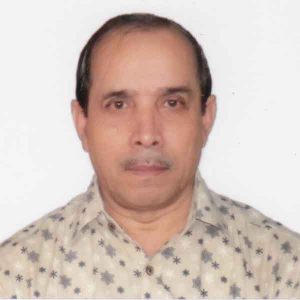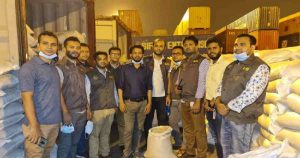Mostafa Kamal Majumder
My lookout for news stories landed me on a move by some greedy people coming up with a formal proposal submitted to the government in October 1988 to import toxic wastes camouflaging it under the cover of generating cheap electricity by burning such wastes for producing caustic chlorine using only sea water. The proposed plant was to be sited in Sitakundu, Chittagong. The suppliers of wastes from Philadelphia, United States had clearly mentioned the hazardous chemicals that would be with the wastes.
The proposal was addressed to the Department of Industries, now the Board of Investment, for setting up the said Caustic Chlorine Plant. As a matter of routine for environmental clearance the proposal was referred to the Department of Environmental Pollution Control (DEPC). Men behind the proposal moved with its files and made no mistake of giving sugar-coated warnings to DEPC people. ‘Gain materially by becoming consultants of the project, or else what is the guarantee that you return home from office safe.’ Thus the work of the DEPC was made difficult.
Experts however knew well that the wastes proposed to be imported had little combustible properties to create enough heat for generating electricity to run a caustic chlorine plant. They also knew that generators of such hazardous wastes actually paid money to the importers for helping them get rid of those because safe disposal of hazardous wastes was even more costly. The project proposal said Taka 666 million would be invested to construct the said caustic chlorine plant and that initially two shiploads of hazardous wastes would be imported.
DEPC officials considered themselves to be too small fries and were frightened to be quoted. The story thus had to be done by putting the whole thing into a big mouth. This writer first contacted the then DG of the Department of Industries Faizur Raqqaque who refused to be quoted but hinted that the matter was lying with the Ministry of Industries. A meetig on the proposal held at the department was ‘cancelled for unavoidable reasons.’ A department source said at that time they has no objection to the setting up of the proposed plant provided the Ministry of Commerce allowed the import of industrial wastes. The greedy people who moved the proposal managed to enlist the blessings of a person close to the then Head of the State and thus people concerned remained tight lipped as the file moved from place.
The then Prime Minister Barrister Moudud Ahmed who was also in charge of the Ministry of Industries addressed a news briefing at the Ganabhaban, now the Prime Minister’s official residence, before going on a month-long tour of Europe to promote Bangladesh’s exports. This writer tried this opportunity to assess if the Premier was aware of the move and if so his stand on the same. Replying to one question from me he said, ‘Import of wastes was prohibited in the country’ and jokingly added they may consider allowing this if a journalist like me applied for the same. Other journalists present looked at me with scoffing faces. But I knew what I was after. Clearly Moudud Ahmed was not aware of the move.
Another meeting was held at the Ministry of Commerce on October 24, 1988 invited representatives of concerned agencies. Representatives of the Department of Environmental Pollution Control and the Atomic Energy Commission raised serious objection to the idea of importing hazardous industrial wastes which could pose a serious threat to the environment. But the meeting ended inconclusively. Meanwhile, the authorities concerned gave a No Objection Certificate (NOC) the proposal on condition that the entrepreneurs should obtain clearance for the import of wastes.
Dhaka University Prof Syed Zahir Haider, a legend in the Department of Chemistry, was very useful in ascertaining that the proposal was meant to hoodwink the people in the government to actually import hazardous wastes for money. After seeing the papers given by US exporters of the wastes he said the wastes mentioned would not burn, extra materials would have to be used to get those burned. The toxic chemicals that were to be mixed with those would seriously harm the surrounding environment during the incineration process. He also said that such wastes were dumped on third world countries to avoid expensive safe disposal. He was ready to be quoted for his interpretation of the proposal for the import of toxic wastes.
It was learnt from one source that the proposal would be discussed at the Ministry of Industries at a meeting to be presided over by its secretary. This writer waited for the meeting to be held and at the close of the meeting one day, called the Industries Secretary over the telephone. A surprised secretary said that the proposal was discussed but no decision was made. The much needed big mouth was thus found to put the entire story into and this writer prepared the story for publication in The Bangladesh Times, a paper under the then Government Newspaper Management Board. News Desk people wanted to give the writer a byline, but as he preferred not to have a byline they became suspicious and referred the story to Editor Shahidul Huq. The editor sought to know the story’s details and suggested that positive its points should be written first and then the negative points be given space. ‘I don’t want to kill your story, but you have to follow this policy to get it published.’
This writer consulted some senior professional colleagues who suggested, instead of writing all positive points at the beginning, write two positive points to be juxtaposed by one negative point at the beginning before developing the whole story. After this trial and error the story came out on November 03 the same year.
This story led to the publication of a series of articles, editorials and features in different newspapers against the move to import hazardous industrial wastes. The scientific community of Bangladesh which cooperated with newspapers in projecting the story by giving expert opinions also issued a strongly worded statement. The statement issued by the Council of the Bangladesh Association for the Advancement of Sciences (BAAS) on November 23 was published in all Dhaka dailies.
A week later on November 29, 1988 the government ‘warned against attempts to import toxic wastes into the country. The official reaction as was published in newspapers ran thus … ‘attempts are being made to import toxic wastes dangerous for all living beings – on various pretexts, claiming that these are needed for industrial and other uses. … the import of wastes is banned under the import licensing policy. Therefore, everyone should be alerted that such attempts to bring in dangerous materials be foiled.’
Following the publication of the official reaction, circulated through the Press Information Department (PID), two orders were issued from the President’s Secretariat on two successive days – November 30 and December 1, 1988. In the first order the Department of Environmental Pollution Control was asked to take necessary measures in cooperation with the media to convey the message that such wastes could under no circumstances be allowed to be imported. In the second the department was asked to create awareness among the people about the dangers of importing wastes from developed countries.




